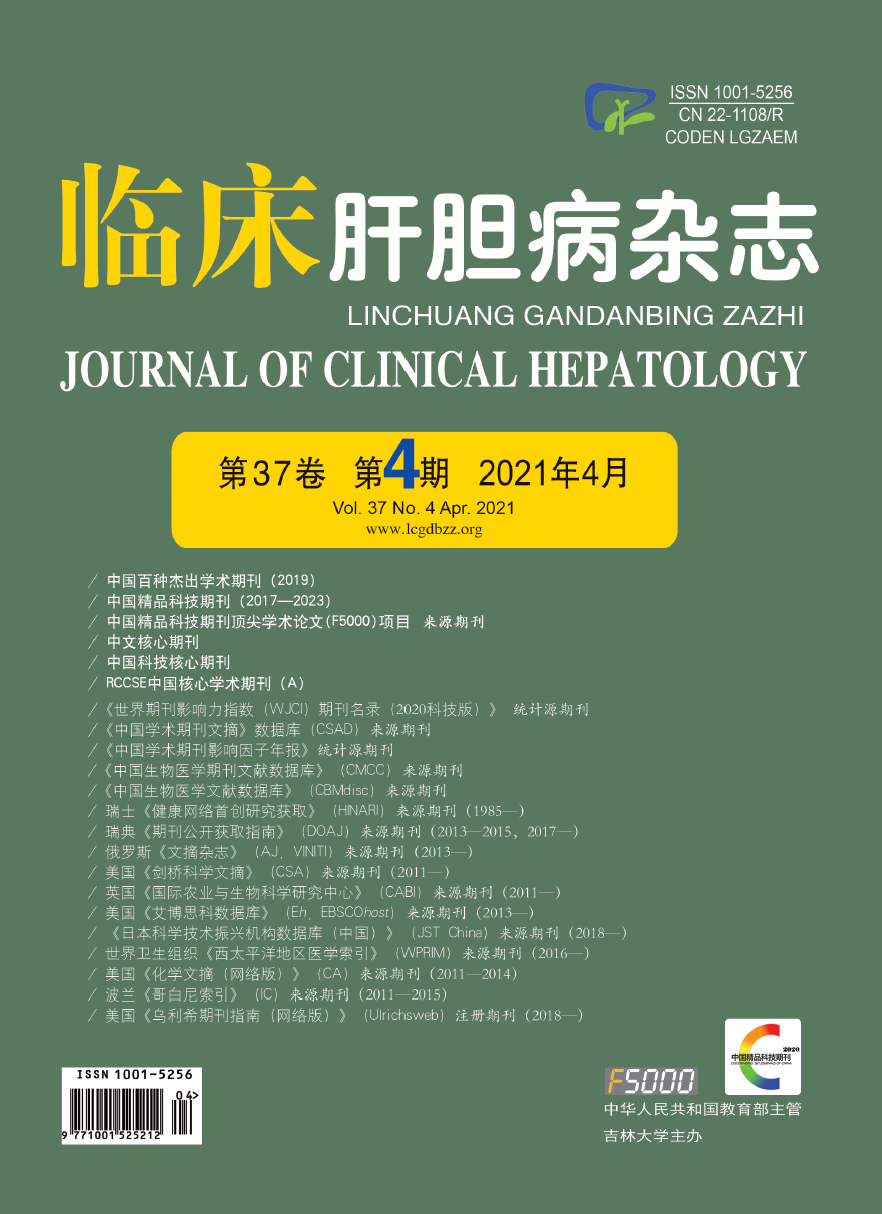| [1] |
PORTELLI M, JONES CD. Severe acute pancreatitis: Pathogenesis, diagnosis and surgical management[J]. Hepatobiliary Pancreat Dis Int, 2017, 16(2): 155-159. DOI: 10.1016/s1499-3872(16)60163-7. |
| [2] |
GUO Q, LI A, XIA Q, et al. The role of organ failure and infection in necrotizing pancreatitis: A prospective study[J]. Ann Surg, 2014, 259(6): 1201-1207. DOI: 10.1097/SLA.0000000000000264. |
| [3] |
PETROV MS, WINDSOR JA. Classification of the severity of acute pancreatitis: How many categories make sense?[J]. Am J Gastroenterol, 2010, 105(1): 74-76. DOI: 10.1038/ajg.2009.597. |
| [4] |
BRADLEY EL 3rd, DEXTER ND. Management of severe acute pancreatitis: A surgical odyssey[J]. Ann Surg, 2010, 251(1): 6-17. DOI: 10.1097/SLA.0b013e3181c72b79. |
| [5] |
VAN SANTVOORT HC, BESSELINK MG, BAKKER OJ, et al. A step-up approach or open necrosectomy for necrotizing pancreatitis[J]. N Engl J Med, 2010, 362(16): 1491-1502. DOI: 10.1056/NEJMoa0908821. |
| [6] |
HOLLEMANS RA, BAKKER OJ, BOERMEESTER MA, et al. Superiority of step-up approach vs open necrosectomy in long-term follow-up of patients with necrotizing pancreatitis[J]. Gastroenterology, 2019, 156(4): 1016-1026. DOI: 10.1053/j.gastro.2018.10.045. |
| [7] |
UHL W. Systematic review of percutaneous catheter drainage as primary treatment for necrotizing pancreatitis (Br J Surg 2011; 98: 18-27)[J]. Br J Surg, 2011, 98(1): 27-28. DOI: 10.1002/bjs.7309. |
| [8] |
|
| [9] |
BELLAM BL, SAMANTA J, GUPTA P, et al. Predictors of outcome of percutaneous catheter drainage in patients with acute pancreatitis having acute fluid collection and development of a predictive model[J]. Pancreatology, 2019, 19(5): 658-664. DOI: 10.1016/j.pan.2019.05.467. |
| [10] |
GUO Q, LI A, HU W. Predictive factors for successful ultrasound-guided percutaneous drainage in necrotizing pancreatitis[J]. Surg Endosc, 2016, 30(7): 2929-2934. DOI: 10.1007/s00464-015-4579-x. |
| [11] |
Pancreas Study Group, Chinese Society of Gastroenterology, Chinese Medical Association; Editorial Board of Chinese Journal of Pancreatology; Editorial Board of Chinese Journal of Digestion. Chinese guidelines for the management of acute pancreatitis (Shenyang, 2019)[J]. J Clin Hepatol, 2019, 35(12): 2706 -2711. DOI: 10.3969/j.issn.1001-5256.2019.12.013. |
| [12] |
LEI RQ, ZHANG SD. Significance of systemic inflammatory response in the pathogenesis of acute pancreatitis[J]. Chin J Hepatobiliary Surg, 2000, 6(1): 76. DOI: 10.3760/cma.j.issn.1007-8118.2000.01.033. |
| [13] |
van BAAL MC, van SANTVOORT HC, BOLLEN TL, et al. Systematic review of percutaneous catheter drainage as primary treatment for necrotizing pancreatitis[J]. Br J Surg, 2011, 98(1): 18-27. DOI: 10.1002/bjs.7304. |
| [14] |
SUN B, LI GQ. Surgical intervention strategies for local complications of severe acute pancreatitis[J]. Chin J Dig Surg, 2020, 19(4): 379-383. DOI: 10.3760/ cma.j.cn115610-20200121-00040.
孙备, 李冠群. 重症急性胰腺炎局部并发症外科干预策略[J]. 中华消化外科杂志, 2020, 19(4): 379-383. DOI: 10.3760/ cma.j.cn115610-20200121-00040.
|
| [15] |
BANKS PA, FREEMAN ML, Practice Parameters Committee of the American College of Gastroenterology. Practice guidelines in acute pancreatitis[J]. Am J Gastroenterol, 2006, 101(10): 2379-2400. DOI: 10.1111/j.1572-0241.2006.00856.x. |
| [16] |
SHI N, LIU T, de la IGLESIA-GARCIA D, et al. Duration of organ failure impacts mortality in acute pancreatitis[J]. Gut, 2020, 69(3): 604-605. DOI: 10.1136/gutjnl-2019-318241. |
| [17] |
ROCHA FG, BENOIT E, ZINNER MJ, et al. Impact of radiologic intervention on mortality in necrotizing pancreatitis: The role of organ failure[J]. Arch Surg, 2009, 144(3): 261-265. DOI: 10.1001/archsurg.2008.587. |
| [18] |
SCHEPERS NJ, BAKKER OJ, BESSELINK MG, et al. Impact of characteristics of organ failure and infected necrosis on mortality in necrotising pancreatitis[J]. Gut, 2019, 68(6): 1044-1051. DOI: 10.1136/gutjnl-2017-314657. |
| [19] |
TENNER S, BAILLIE J, DEWITT J, et al. American College of Gastroenterology guideline: Management of acute pancreatitis[J]. Am J Gastroenterol, 2013, 108(9): 1400-1415. DOI: 10.1038/ajg.2013.218. |
| [20] |
BABU RY, GUPTA R, KANG M, et al. Predictors of surgery in patients with severe acute pancreatitis managed by the step-up approach[J]. Ann Surg, 2013, 257(4): 737-750. DOI: 10.1097/SLA.0b013e318269d25d. |
| [21] |
JI L, WANG G, LI L, et al. Risk factors for the need of surgical necrosectomy after percutaneous catheter drainage in the management of infection secondary to necrotizing pancreatitis[J]. Pancreas, 2018, 47(4): 436-443. DOI: 10.1097/MPA.0000000000001031. |
| [22] |
Italian Association for the Study of the Pancreas (AISP), PEZZILLI R, ZERBI A, et al. Consensus guidelines on severe acute pancreatitis[J]. Dig Liver Dis, 2015, 47(7): 532-543. DOI: 10.1016/j.dld.2015.03.022. |
| [23] |
van GRINSVEN J, van SANTVOORT HC, BOERMEESTER MA, et al. Timing of catheter drainage in infected necrotizing pancreatitis[J]. Nat Rev Gastroenterol Hepatol, 2016, 13(5): 306-312. DOI: 10.1038/nrgastro.2016.23. |
| [24] |
|
| [25] |
|
| [26] |
AI X, QIAN X, PAN W, et al. Ultrasound-guided percutaneous drainage may decrease the mortality of severe acute pancreatitis[J]. J Gastroenterol, 2010, 45(1): 77-85. DOI: 10.1007/s00535-009-0129-4. |
| [27] |
SMIT M, BUDDINGH KT, BOSMA B, et al. Abdominal compartment syndrome and intra-abdominal ischemia in patients with severe acute pancreatitis[J]. World J Surg, 2016, 40(6): 1454-1461. DOI: 10.1007/s00268-015-3388-7. |
| [28] |
TIAN H, LI FX, SONG SW. Features of infection secondary to severe acute pancreatitis and related control strategies[J]. J Clin Hepatol, 2019, 35(2): 451-456. DOI: 10.3969/j.issn.1001-5256.2019.02.048. |
| [29] |
BOSSCHA K, HULSTAERT PF, HENNIPMAN A, et al. Fulminant acute pancreatitis and infected necrosis: Results of open management of the abdomen and "planned" reoperations[J]. J Am Coll Surg, 1998, 187(3): 255-262. DOI: 10.1016/s1072-7515(98)00153-7. |
| [30] |
Group of Pancreas Surgery, Chinese Society of Surgery, Chinese Medical Association. Guidelines for the management of acute pancreatitis(2014)[J]. J Clin Hepatol, 2015, 31(1): 17-20. DOI: 10.3969/j.issn.1001-5256.2015.01.004. |
| [31] |
SORRENTINO L, CHIARA O, MUTIGNANI M, et al. Combined totally mini-invasive approach in necrotizing pancreatitis: A case report and systematic literature review[J]. World J Emerg Surg, 2017, 12: 16. DOI: 10.1186/s13017-017-0126-5. |
| [32] |
ZHANG H, CHEN GY, XIAO L, et al. Ultrasonic/CT image fusion guidance facilitating percutaneous catheter drainage in treatment of acute pancreatitis complicated with infected walled-off necrosis[J]. Pancreatology, 2018, 18(6): 635-641. DOI: 10.1016/j.pan.2018.06.004. |
| [33] |
YOKOI Y, KIKUYAMA M, KUROKAMI T, et al. Early dual drainage combining transpapillary endotherapy and percutaneous catheter drainage in patients with pancreatic fistula associated with severe acute pancreatitis[J]. Pancreatology, 2016, 16(4): 497-507. DOI: 10.1016/j.pan.2016.03.007. |














 DownLoad:
DownLoad: